Ischnoderma resinosum is a great all-around mushroom. They, and their cousins, polypore mushrooms like hen and chicken of the woods mushrooms can make a good fermented mushroom kimchi. Read on and I'll tell you what you need to know.
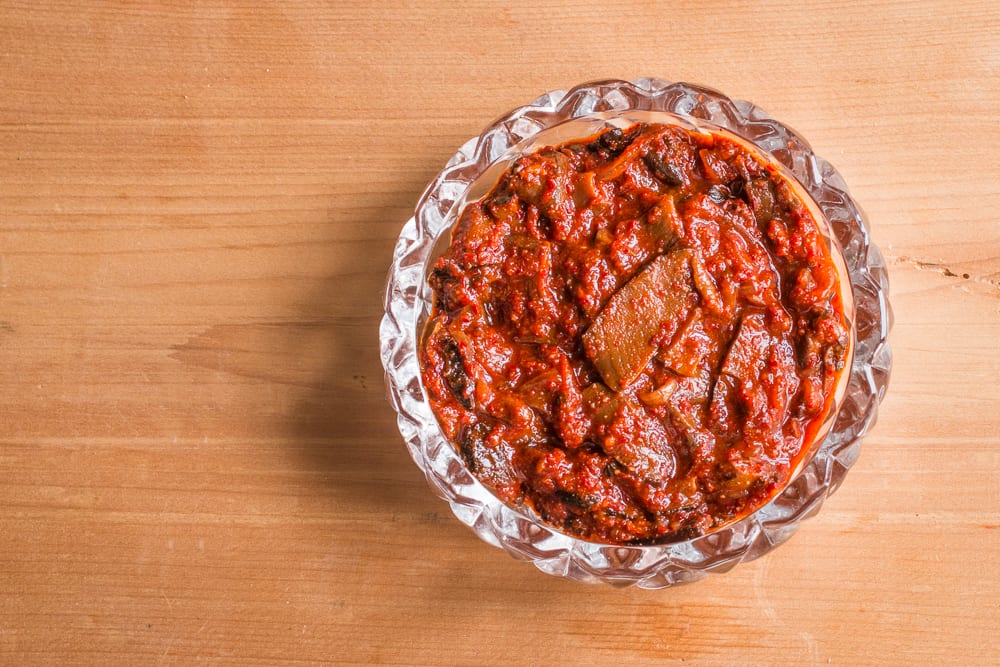
Sure, There's plenty of mushrooms you could ferment like this, but some are better than others. Kimchi to me, means fermenting things with some other strong, spicy, stinky flavors.
That means lots of delicately flavored mushrooms (local chanterelles and porcini), would probably be a waste fermented with chilis, garlic and ginger. That is , unless you have the desire, and/or a comically large haul and you're running out of ideas. Ischnoderma will happily become a flavor vehicle for funky aromas-their texture is what shines here.
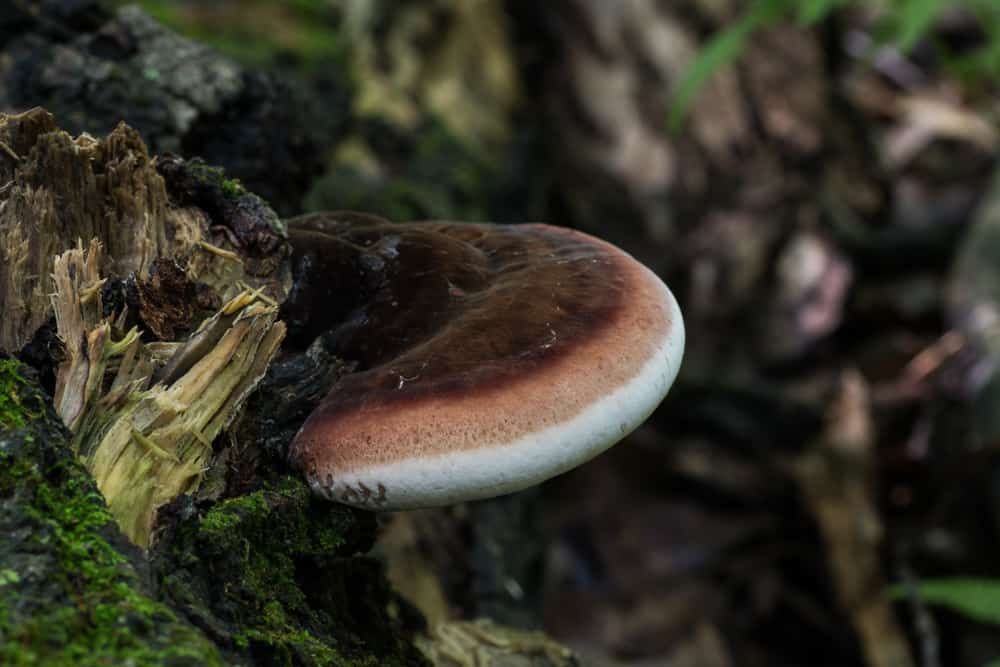
Use firm mushrooms for the best texture
Besides choosing a mushroom with a flavor (or lack of one in the case of say wood ears) there's a few rules to take into account with fermenting wild mushrooms that you won't be cooking before ingesting.
Basically, it's good to have some kind of benign, tame mushroom, or one you could eat raw if you want to consume the end product without cooking it. Personally I don't care either way, I just want whatever tastes the best.
Polypores are pretty tame from an edibility perspective, and have shapes that are easy to cut into slices and strips, so they're what I used, but black trumpet mushrooms would be good too. Cultivated mushrooms, especially strips of portobello, quartered shiitake, or the pleasantly bland wood ear would be good too.
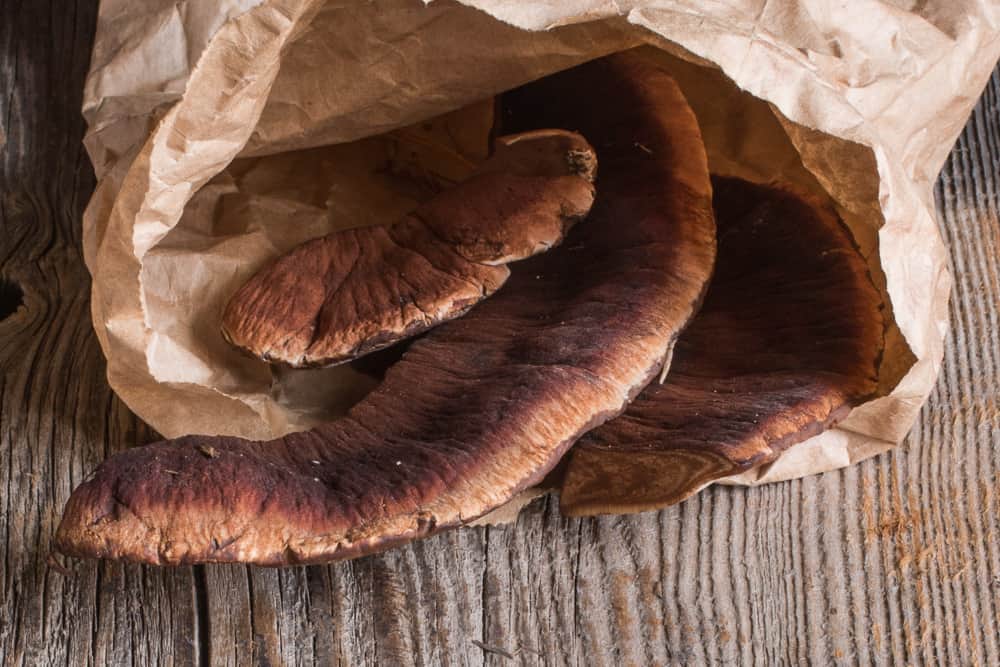
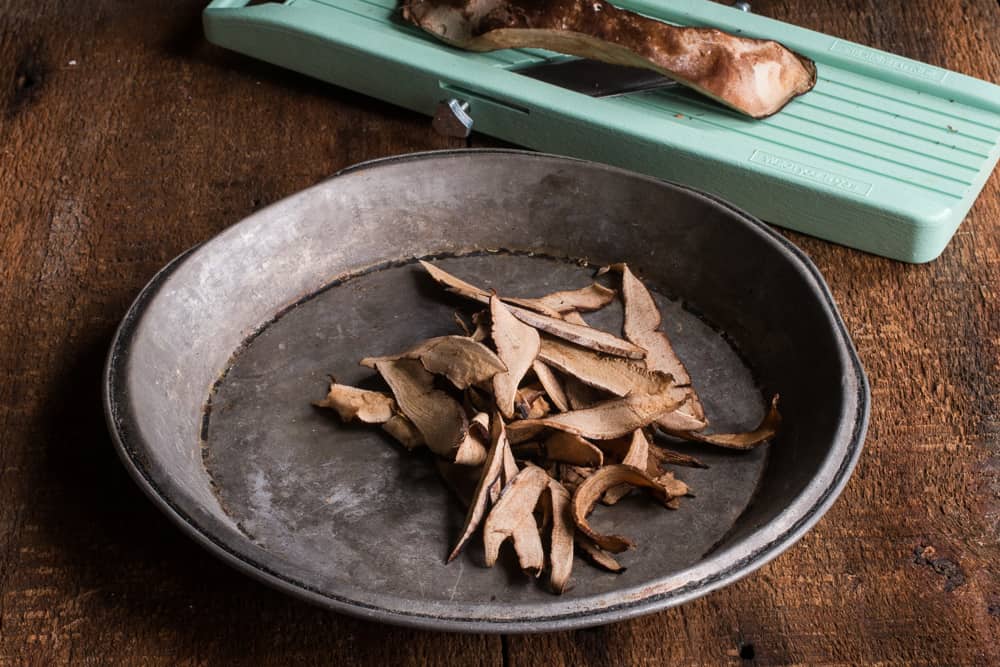
Vacuum Sealed Mushroom Fermentation
Another difference from typical kimchi that I used for peace of mind/ease, and safety, was a vacuum sealer instead of a vessel. Fermenting wild mushrooms is not for amateurs, but vacuum sealing removes air-borne bacteria, the arch-nemesis of ferments, which takes a lot of guesswork out of the equation.
Even if you've never fermented a thing in your life, you, yes you, can safely ferment using a vacuum sealer. It may not look as cool as the currently fashionable, handmade ceramic fermentation vessels someone made while living in a yurt, but it won't fail you.
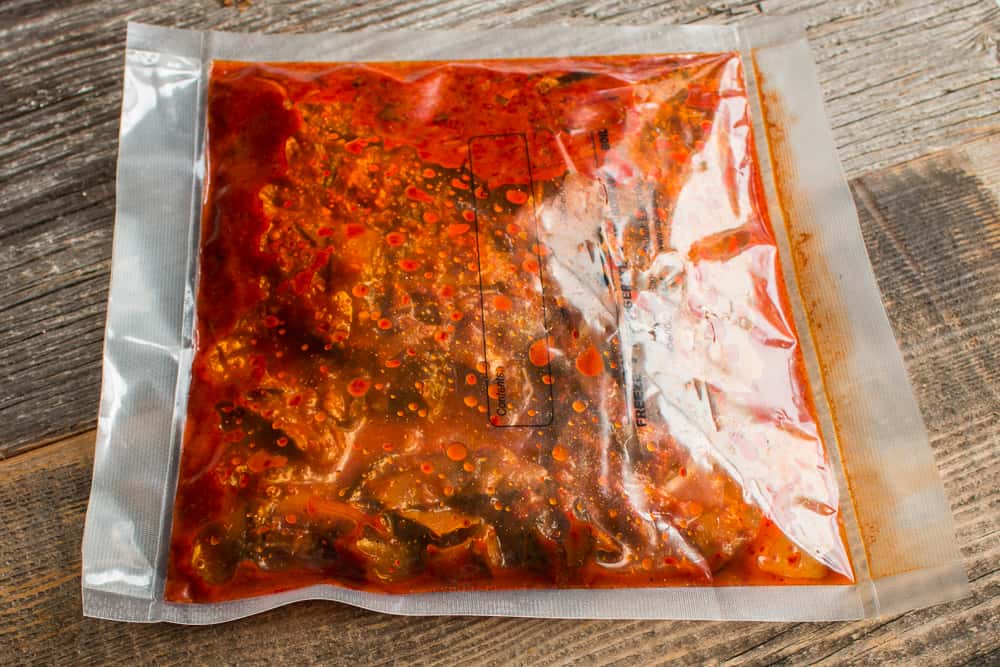
I still have plenty of crocks and things around made for kraut and the like, but kimchi is stinky. If you have a partner or loved one that doesn't like the exciting game I used to play in college called "find the smell", vacuumed, odorless ferments can be a god sent.
On Safety and Raw Mushrooms
Some people think eating raw wild mushrooms is heresy, and it definitely isn't advisable for some species. 14 day fermented mushrooms are essentially cold pickled, due to the lactic acid created from salty lacto-fermentation, so they're not technically raw, but as no heat has been applied, certain species shouldn't be eaten like that. For more on that, refer to my post: "Can You Eat Wild Mushrooms Raw?"
You can cook this before fermenting
To be crystal clear, you can absolutely cook your mushrooms before you ferment them, and you can probably get slightly different flavors if you lightly color them. To be clear on another point, in order to ferment mushroom species known to cause issues with some people, such as morels, honey mushrooms, or Leccinum, you must cook them either before or after fermenting.
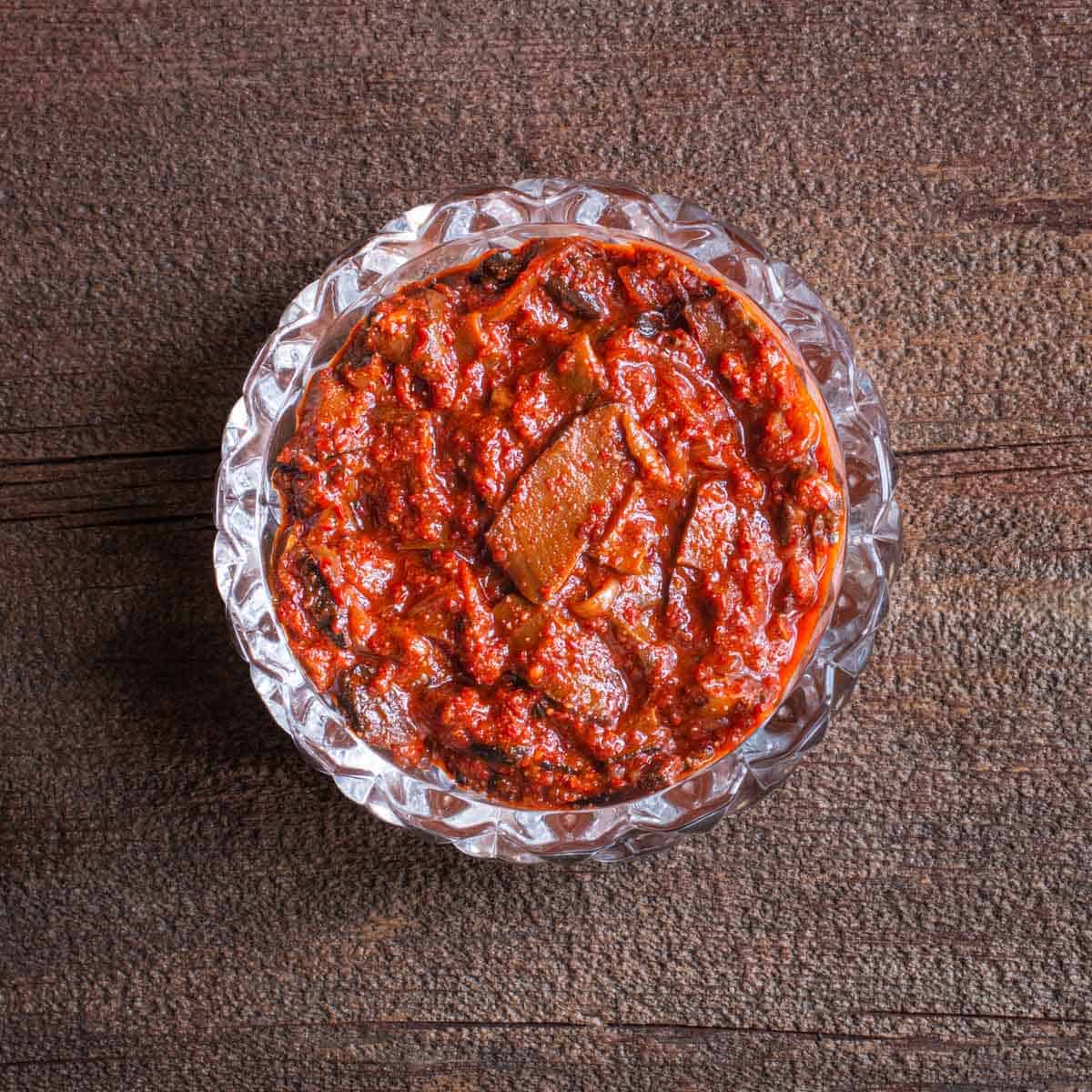
To precook mushrooms for fermenting, steam them for a few minutes, or sweat them in oil, covered, without browning until completely cooked. You could also cook them after they've fermented, but splattering chili paste can be messy.
Cooking the mushrooms in the vacuum bag (sous-vide), although convenient, will not reach proper temperatures some mushrooms need to denature problematic compounds that could give you a tummy-ache.
This is a really good condiment for a bowl of steamed rice, or other bland starches since it's highly seasoned, as it should be. Use wherever you would kimchi.
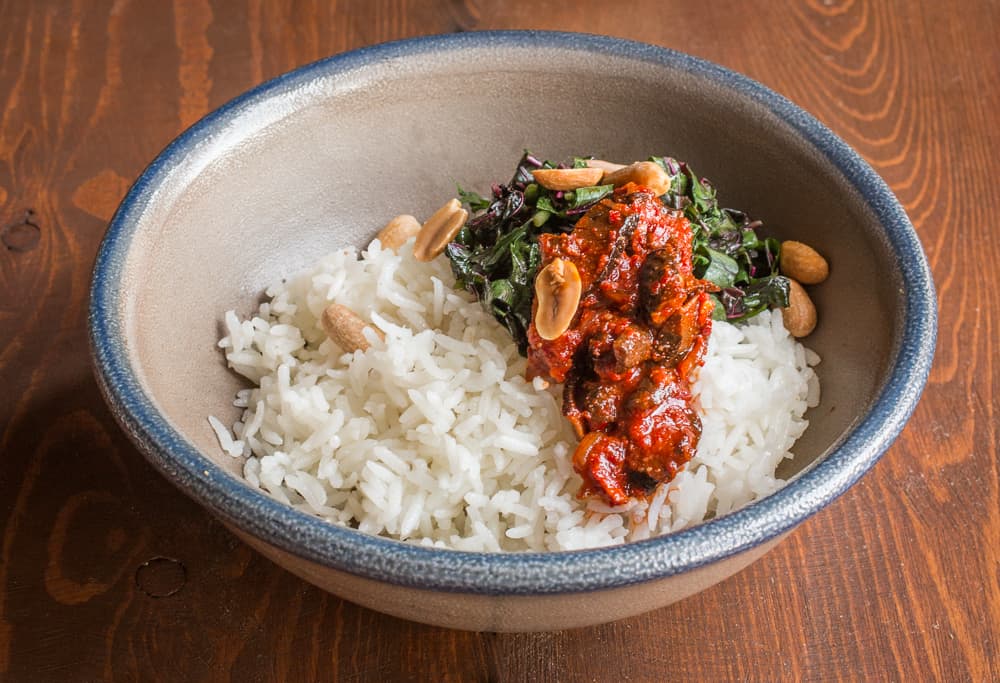
Wild Mushroom Kimchi, with Ischnoderma resinosum
Equipment
- Vacuum sealer (optional)
Ingredients
- 7-8 oz 2 heaping cups thinly sliced, tender Ischnoderma resinosum or similar wild mushrooms
- 10 grams 1 Tablespoon finely chopped fresh garlic
- 5 grams 2 teaspoons minced or grated fresh ginger
- 10 grams 2 teaspoons kosher salt
- 20 grams scant ¼ cup mild korean chili flakes (gochugaru)
- 1 Tablespoon white rice flour or finely grind white rice in a coffee grinder
- 80 grams yellow onion ¼ cup chopped
- 12 grams 1 Tablespoon maple syrup
- 2 Tablespoons good fish sauce Red Boat brand is the standard
Instructions
- If you are worried about digestibility of mushrooms, steam your mushrooms until wilted (5-10 minutes) before assembling the kimchi instead of seasoning them and fermenting from raw.
- Process the salt, fish sauce, garlic, ginger, maple, chili flakes and onion in a food processor until a paste is formed, then taste the paste, and if adjust the heat level if needed. Mix the paste with the mushrooms, then quickly pack into a vacuum bag using the moist setting, seal, label and date.
- If you don't want to use a vacuum bag, or a sealer is unavailable, you can press everything down in a mason jar and putting a weight on top of it, making sure to keep everything underneath a layer of liquid. If you're vacuum sealer has difficulty sealing liquids, put the mixture in a ziploc bag, then put the zip loc in a vacuum bag and seal.
- Put the mixture in a cool, dark place for 1-2 weeks inside of another container that can catch liquid if the bag leaks, which is rare, but possible.
- After two weeks, slice open the bag like a Christmas present and eat hot or cool with some steamed rice, eggs, or other bland foods that can welcome aggressive flavors.
- The kimchi will last for at least a month and probably longer in the fridge, stored in a container with a tight fitting lid, such as a mason jar, etc.
Notes
- For you fermenters out there, the proportions below start with about 5% salt by weight of mushrooms, but you could sure cut it down to 3% and add some extra soy or fish sauce for funk. Typical kimchi recipes start with a brine of 7%, and add extra salt by way of fish sauce from there, but I wanted their natural water to stay in the mix. Either way will be fine.
- The recipe here is basic, if you want, add some garnishes like scallions or spring onions, shredded carrot, etc.
- Look for Korean chili flakes at your local Asian market or online. Look for a brand like this one.
- I add rice flour to bind the liquids and make it saucy, if you grind your own rice flour, you might want to add a tablespoon or two of water and simmer the mushroom kimchi after it ferments to make sure there aren't hard rice pieces.
- I use medium Korean chili flakes (gochugaru) but they come in mild, medium or hot, if you want a nuclear hot kimchi, purchase accordingly.
Nutrition
Related Posts
Wild Mushroom Conserve (Pickled Mushrooms)
Fermented Japanese Amanita Muscaria Mushroom Pickles
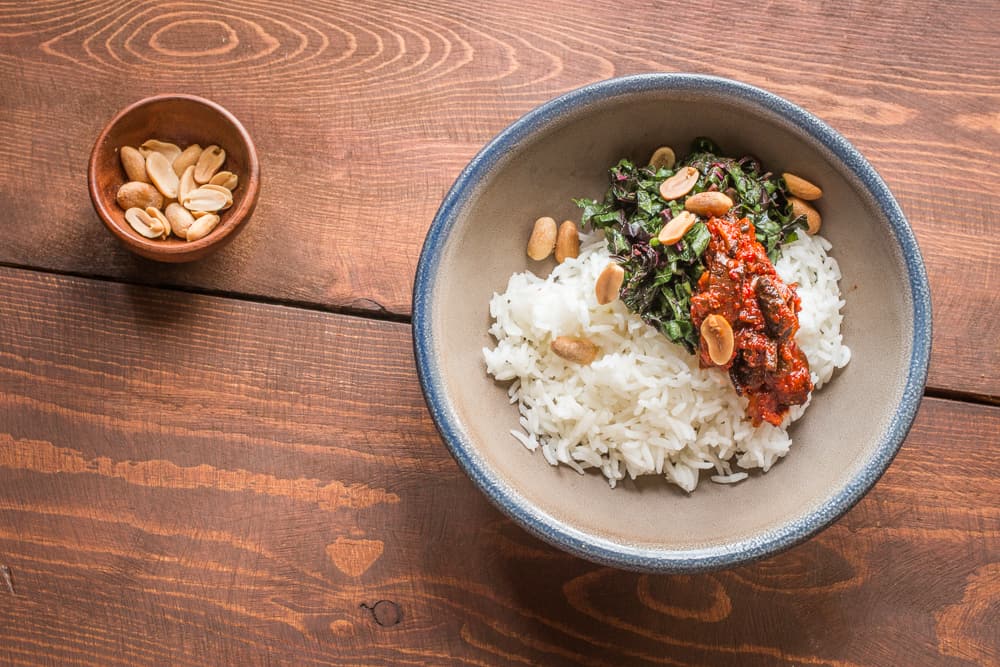

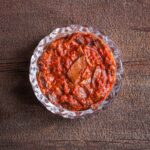
Jake
Possibly the best thing I've tasted made with I. resinosum. Thanks Alan.
lian
I ferment a lot in souvide bags. And yes, the bags will gas-up. It mostly depends on what you ferment, any Gassy vegetable will blow up the bags. My solution is using a tape covering a small hole in the bag ( corner ) for the first to weeks. SO the gaz can go out and filters the air coming in. After a week or two most gassing is done, and I can vacuum and seal the bags again. (same bags, seal the corner where the tape used to be). I ferment cabbage with chanterelles, explosive and delicious! with love.
Kristen Anne P. Uy
What is the brand of your vacuum sealer?
Alan Bergo
I use this foodsaver. I'd advise you to get a middle of the road model. Cheap versions (under 75$) don't last too long, expensive models will last but may have special parts (gaskets) that are difficult to source if they fail.
Will K.
What a great idea using mushrooms in kimchi! The only wild ingredient I've ever used in kimchi was beefsteak plant (Perilla frutescens- invasive here in VA). I have lacto-fermented Lactarius piperatus (boiled and drained before brining), and they turned out pretty well. I'm definitely going to give this a try.
Viola
Whaaat!? That is so awesome. I'm definitely going to try fermenting in vac seal bags. So are you fully vacuum suctioning it and sealing? That would give lots of space for gases...I take it. My world expanded. Thanks!
Not even to mention the super cool addition of mushrooms. Even better.
Bill
I’m totally giving it a try. I’m pretty good at avoiding mold in glass containers but I am super-intrigued now! Even if it explodes, no “shrapnel”!
CRYSTAL TOLMIE
I was looking for a picture of the raw whole mushrooms and other ingredients you used, but I don't see it in your visuals.
Alan Bergo
The first two words in this post (Ischnoderma resinosum) are a link that will take you to a post on them if you want to see visuals. I was working at night and didn't shoot ingredients for this, and Google doesn't like re-using pictures or media in multiple posts. BUT, this going to be pretty popular so I should probably dig around my archives for some supplemental images to help people understand. Hang on.
CRYSTAL TOLMIE
Oh, thank you! I'm a long way from Minnesota, but I'll look for them, I just found my first Matsutakes, they are in my yard!! Thanks again, getting hooked on mushroom hunting is the best : )
Bill
I love the idea but am kind of amazed your bags don’t just explode!
Alan Bergo
Bag explosion is a non-issue really, just keep an eye on them. It is an issue for sauerkraut, but I've had far more failures from using plastic bags filled with brine on top of ferments, or traditional methods. I have a friend in Cleveland (James Beard nominee Jeremy Umansky) who ferments everything for his restaurant in vacuum bags, and plenty of chef friends who do so on a smaller scale. Its the easiest way to ferment anything, and it's clean and odorless. I have never seen mold in a vaccuum ferment, ever.